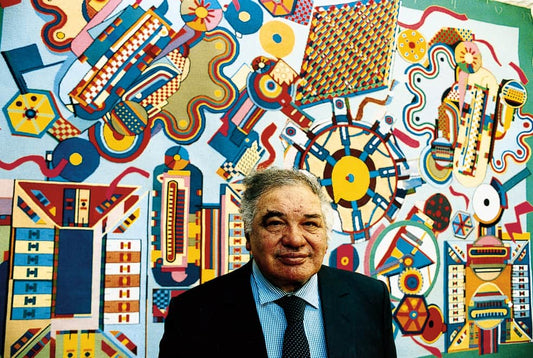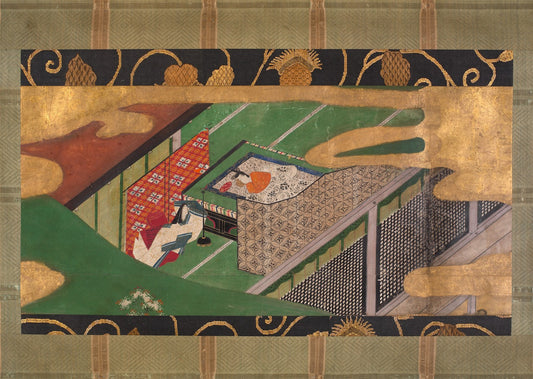Feature image: Frederic Remington, On The Southern Plains, 1907 via the MET
Cowboy Core: Western Art History to Pop Culture
There’s often something so nostalgic about the ‘Wild West,’ but why? Perhaps romanticized depictions of the old West bring us to another time or place? Maybe they remind us of a movie or TV show we once loved. It's possible through today’s modern lens that ‘cowboy core’ is just a fleeting trend. Whatever it may be, it seems that lately, “cowboy core” and a media-driven idea of Western culture are all the rage in interior design trends, media, fashion, film, and art.
And really, it’s nothing new. Society has romanticized cowboys and ‘the Wild West’ for generations. So, let’s take a look.
A myriad of sources dive into America’s ‘Wild West’ past for a reason: It represents a vast and often misconceived chapter in history. While I’m not here to write a book or present myself as an expert, it is crucial to include history when considering the complex romanticization of today's Western cowboy-centric aesthetic.
The Wild West, once known as the Old West, was the ever-evolving western region of the United States that Great Britain and the Americans sought to colonize. Following America’s Independence, westward expansion became increasingly violent, leading to the killing and displacement of Indigenous people across what is known as America today.
One article, Race and the Pop Culture Cowboy, written by Reina Guttuso, states, “U.S. popular culture overwhelmingly depicts cowboys as rugged white men who embody the racist ideology of Manifest Destiny. In reality, many 19th and 20th-century cowhands were Black, Native American, and Mexican. Visual depictions of cowhands of color reveal the complex lives of marginalized people in the American West.” As it turns out, “The Wild West” was a marketing scheme coined to cover up and whitewash violent realities that took place during Western expansion.
The marketing strategy worked. Visual motifs and imagery of the “cowboy” and “the Wild West” that began over a century ago remain prominent and loved in mainstream media, movies, fashion, and art today.
So, let’s start with some art.

Perhaps Ram's Head, White Hollyhock-Hills (Ram's Head and White Hollyhock, New Mexico) by Georgia O'Keeffe calls to a most ominous western landscape. Though the skull and hollyhock flower lack metaphorical significance, the gray sky and rolling red hills in the background represent the enigmatic energy associated with the Wild West. Throughout her career, O’Keefe reimagined these desert landscapes, often including animal skulls, possibly nodding to the intersection of nature and mortality within the expansive Western landscape.

While O’Keefe’s painting calls for a dreary western desert landscape, leaving more room for interpretation, Looking Up the Yosemite Valley by Albert Bierstadt is an example of a more literal depiction of westward expansion. Though incredibly beautiful, these depictions contribute to the beautification of western expansion, glossing over the violence that was simultaneously taking place.
When one recalls how the ‘Wild West’ was depicted in the 19th century, it is comical to think of modern reimaginings of Western art today. These modern-day examples include cowboy hat graphic tees, cowboy bull-riding prints, and even miniature cowboy boot match holders. . How did the depiction of this time in history become so deeply rooted in consumerism, and far removed from its origins?
Well, for starters, it can be fun to juxtapose an old Western aesthetic with today’s pop culture trends.
In 2023, “cowboy core” became a viral sensation across media platforms TikTok and Instagram when artists Beyoncé and Harry Styles sported cowboy-inspired hats, jackets, and slacks.
Two years prior, Fashion designer Olivier Rousteing reimagined classic Western American films in Netflix’s “The Harder They Fall.” One Women’s Wear Daily article states, “In addition to designing some pieces for the film, the Balmain creative director produced a spinoff collection, Balmain x The Harder They Fall. The men’s and women’s ready-to-wear capsule collection was released in November that year.” (Pictured below)

In 2018, the Coen brothers released The Ballad of Buster Scruggs, an incredible satirical depiction of the Old Wild West.
These more recent 2020 examples are not the first of their kind. The 1970s, 80s, and 90s also had their fair share of cowboy core, with brands such as Ralph Lauren maintaining widely popular ‘western wear’ lines for the last 50 years. While the company historically fell under the same white-washing tendencies as many narratives of the Wild West, the company has recently partnered with Naiomi Glasses, a seventh-generation Diné (Navajo) textile artist, fashion designer, and model, as Ralph Lauren’s first artist in residence.
“Our partnership is built on a shared love of heritage and craftsmanship. Over the past two years, Naiomi worked with Ralph Lauren and his design teams to reimagine the original designs of her woven art into a collection inspired by her family, homelands, and community in Dinétah (Navajo Nation). To accompany the collection, she curated one-of-a-kind silver and turquoise jewelry pieces handmade by renowned artisans from the Navajo Nation, Hopi Pueblo, San Felipe Pueblo, and Zuni Pueblo.”
A percentage of every purchase from the newly released collections will go to native-led non-profits and small businesses. It is exciting to witness brands, such as Ralph Lauren, which have historically excluded Indigenous voices and appropriated Native cultures, partner with and give full credit to incredible Indigenous artists like Naomi Glasses. It doesn’t erase the past, but it does look to a promising future.
While this article only begins to scrape the surface of the vast history and present-day examples of Western ‘culture’ & the ‘cowboy’ aesthetic, one thing is certain: exploring the intricacies of this “cowboy” trope reveals a dual truth. It can be fun to remember a time through a nostalgic, seemingly light-hearted lens as we see in pop culture media today. Still, it is crucial to acknowledge this nostalgic perspective is intertwined with a darker and often unrecognized past that also requires the same level of acknowledgment.
©ArtRKL™️ LLC 2021-2024. All rights reserved. This material may not be published, broadcast, rewritten or redistributed. ArtRKL™️ and its underscore design indicate trademarks of ArtRKL™️ LLC and its subsidiaries.












